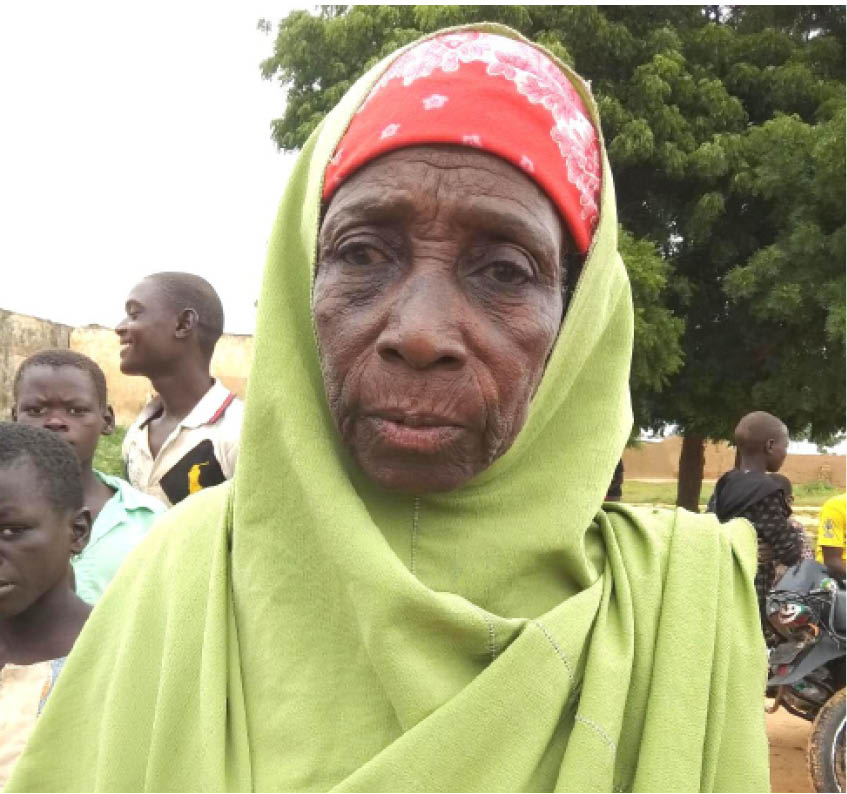Eight-year-old Zainab Danburdi’s academic prowess became noticeable at the Burdi Primary school in Gwabadawa local government area of Sokoto State. The orphan distinguished herself as an outstanding pupil, topping her Primary Two class.
Zainab is one of the girls from impoverished homes who hawked on the streets to support her family. She does not only live in a rural community but a hard-to-reach area where kids hardly access formal education.
It was only in 2017 that she became one of the beneficiaries of the Sokoto State Cash Transfer Programme (CTP) which has now helped to keep her in school.
CTP is an initiative designed to address poverty-related challenges preventing girls’ enrolment and retention in primary education in the 23 local government areas of the state.
The CTP is for economic empowerment of female caregivers of recipients. The beneficiaries utilise it for income-generating activities so they are able to provide for their girls in basic schools.
There had been other initiatives such as Nigerian Partnership for Education Project (NIPEP) and United Nations Children Fund (UNICEF) in the state. However, it was the first time the eight hard-to-reach villages that benefitted from the CT programme in Gwadabawa local government, received such intervention.
The target was the poorest of the poor and Zainab emerged one of the beneficiaries in Burdi village of Gwadabawa.
For promising Zainab, it serves a significant impetus for attendance and retention in school.
“Four of the recipients – Zainab, Talatu, Aisha and Hadiza, are very bright but Zainab is the most brilliant,” says Lawali Musa, the immediate past head teacher of Burdi Primary School.
“They were in abject poverty and hitherto hawking, but with CPT, the situation has improved for the girls.”
How CTP works
Under the CTP assistance to resource-poor households, each of the primary care-givers of girls receives 5,000 per term (15,000 annually). The target of the programme is to get as many as 10,120 Sokoto girls, aged 6 to 15, to enrol and remain in school to at least JSS3 level.
“It was to enhance girls’ access to education; equity, social inclusion and poverty reduction as well as promote integration, synergy, complementarities, active community participation and ownership,” says Mahmuda Galadima, Sokoto State Cash Transfer/Project Implementation Unit Coordinator Ministry of Basic & Secondary Education, Sokoto.
“The primary objective was to increase girls’ enrolment and attendance in the selected schools in Sokoto State. It is also to reduce gender inequality in the selected schools in the state.”
Galadima reveals that the state government scaled up CTP following the successes recorded in the pilot programme.
The pilot programme was unconditional, but the scale-up has a condition, that is enrolment in school for a girl child of a potential beneficiary and 75 per cent class attendance for such a girl.
The gains of CTP
Malama Halima, the mother of a CTP beneficiary, is full of praises for the initiative.
“The cash transfer programme is succour to parents who could not sew uniform, buy books and other school items for their girls,” she says. “It has eased so many things on my child’s educational pursuit.”
Halima’s daughter, Zainab Ahmed, is a Primary two pupil of Ali Tambari Model Primary School Sifawa, Bodinga Local Government Area of Sokoto.
She explains how she spent the N5000 cash grant given to her for the programme. “I used the money to purchase a goat,” she says. “It gave birth to two kids, then we sold one and used the proceeds to sew uniform for Zainab. The goat later had other kids, and we were able to purchase some other school things for her. We also bought sheep.”
For Ruqayya Isah who has twin daughters, it’s like catching two fishes with one worm. Although only one of her twins got financial aid, she used it to support the education of the two. “We thank God, my daughter, Hassana and her twin sister has uniform sewn for them; we also bought a goat from it.”
Statistics of enrolment in benefitting schools confirms claims of rising female students’ population.
In Kauran Kimba Model Primary School Wamakko, for instance, the population of girls saw a gradual rise from 201 in the 2016/17 session, to 206 in 2017/18 and 261 in 2018/19 session.
In many cases, the gap between boys’ enrolment and that of girls is shrinking significantly.
Aliyu Jedo Model Primary School in Binji is one of such schools that illustrate this. In 2015/16 session, the record indicates 621 boys and 483 girls. There were 675 boys and 639 girls for 2017/2018 session, while 2018/19 session reflects 725 males and 711 females. The gap narrowed from 138 in 2015/16 to 36 in 2017/18 and 14 in 2018/2019.
In some cases, the girls have overtaken the boys in students’ population. One of such schools is Kagoye Primary School Gwadabawa where records show that in 2017/18, the students’ population stood at 296 comprising 162 boys and 134 girls. But in 2018/19, enrolment went up to 412. Out of the 116 more students, girls were 75, bringing it to 209 females, to surpass boys who increased by 41 to get a 203 male population.
Similarly, in Burdi, the total population of students was 180 in 2017/2018 comprising 97 boys and 83 girls. By 2018/19, the total population was 395, consisting of 192 boys and 203 girls. Females became more in school, with an increase of 120 compared to boys who rose by 95.
The Director of Schools, Gwadabawa Local Government Education Authority, Dahiru Abubakar, speaks on the growing enrolment of girls.
“In 2017, we had 600 females in schools in the local government, but now we have 1034. It was because of this CTP, Abubakar says. “Some parents who were not prepared to send their girls to school are now rushing to enrol them.”
The headmaster of Ali Tambari Model School Sifawa, Sani Bello, speaks along the same line. “The cash transfer programme makes parents send their children to school on time and always because that money helped them in their normal activities,” he declares.
Amina Isa, whose daughter Ummu Isa is a CTP beneficiary in Gwadabawa Local Government Area, confirms that “Ummu was hawking before she got the money, but has now stopped vending. We bought school items and a goat with theN15,000. The goat has reproduced, so we now have three. It has helped us economically.”
The district head of Gagi, Alhaji Sani Umar Jabbi, Sarkin Yaki Gagi avers, “Today with cash transfer, hawking has drastically reduced. Most of the girls who were hawking before are now in school.”
However, despite the cash transfer programme, a number of pupils who benefitted were seen without uniforms in some schools.
“We have complained to the parents, and enlightened them on the importance of wearing uniforms to school as it distinguishes them from non-pupils,” says Lawali Shehu, the headmaster, Rugagiya Primary School, Kware Local Government Area.
“We do not insist when a pupil doesn’t come with uniform so that they would not stop coming to school.”
Shehu says the school, which now has over 300 students, previously had low attendance.”
Despite the successes recorded the CTP, the rural schools illustrate a characteristic pattern of only one teacher handling a school.
There are dilapidated classroom structures, and pupils sitting on the floor, among others. What is clear is the dire need for interventions to ensure functional and quality education.
However, the Sokoto State Universal Basic Board, SUBEB assures that measures are in place to address the challenges.
“We have started renovating many schools across the state, and we got approval to recruit 2,000 teachers,” the board’s Executive Secretary, Alhaji Faruk Shehu, says.
“The state government has been prioritising girl-child education. As part of efforts to further boost it, we are recruiting more women in our employment in SUBEB.”
Delay of grants
But there is growing disquiet over delay in subsequent payment after the initial one. The CTP is for three years (2017-2019), but so far, it has been disbursed only once.
Galadima, the state CT/PIU coordinator blames the situation on shortage of cash.
“The major challenge is funding,” he says. “Those we paid are now in Primary II. We are supposed to pay them for 2018/2019 sessions as well as enrol new beneficiaries, but we couldn’t do that because of funds.”
Lami Sani, an educationist, though particularly impressed that the CTP has enhanced the appreciation and value for girls’ education, says it should go beyond the numerical data.
“The provision of N5,000 per month to the poorest of the poor has led to positive enrolment outcome for girls in various localities,” she says. “But there should be a corresponding emphasis on quality education so that the state achieves not just boost in enrolment and attendance but effective learning.”
This report was supported by the Wole Soyinka Centre for Investigative Journalism Regulatory Monitoring Programme (REMOP)

 Join Daily Trust WhatsApp Community For Quick Access To News and Happenings Around You.
Join Daily Trust WhatsApp Community For Quick Access To News and Happenings Around You.



